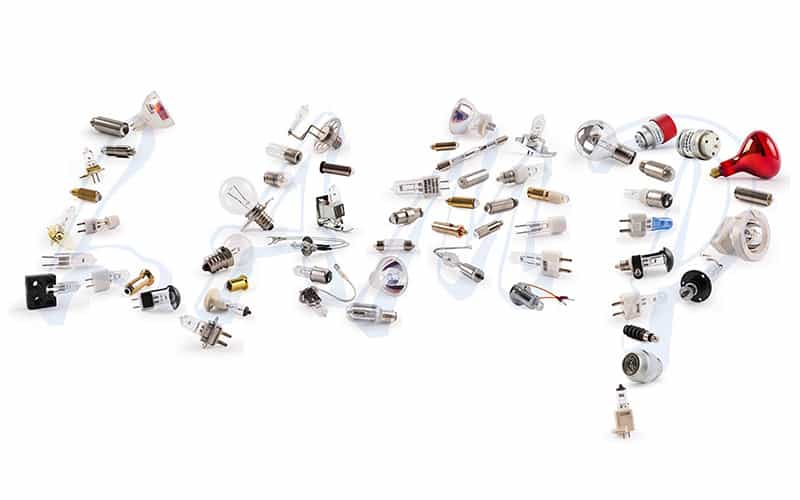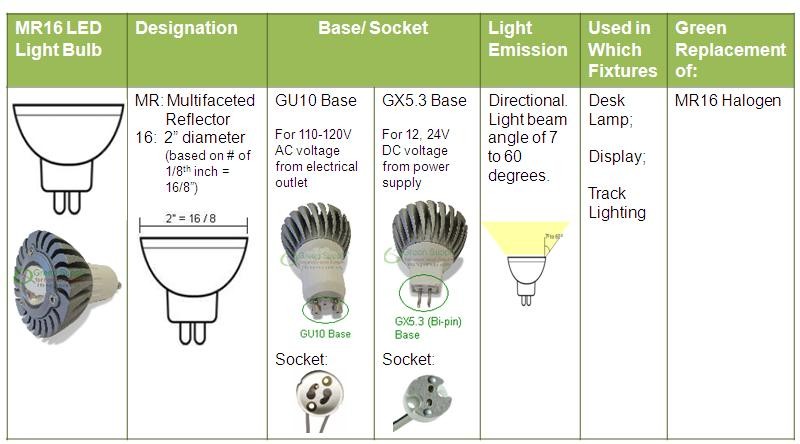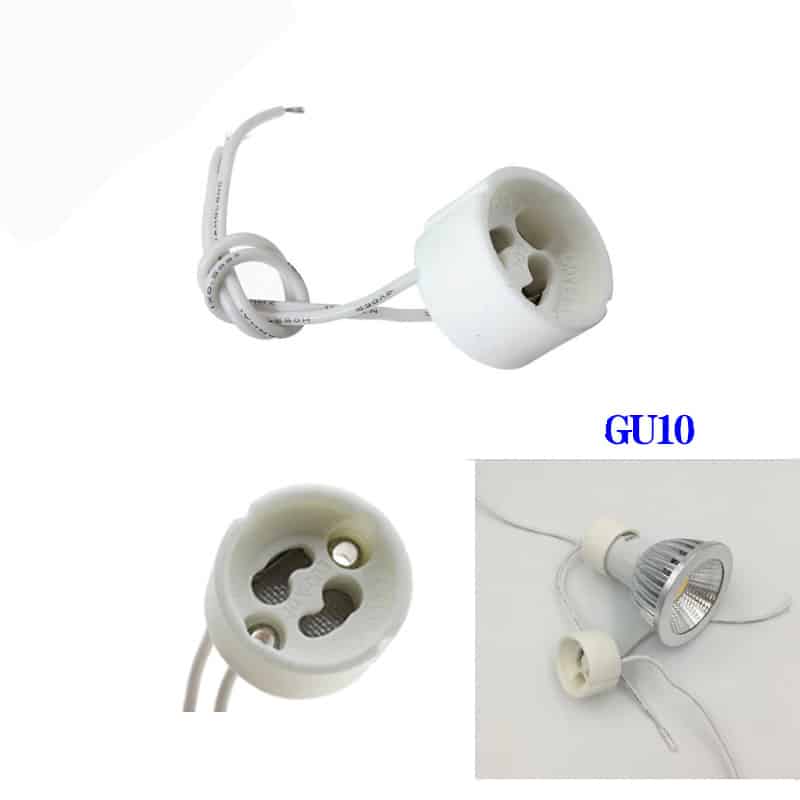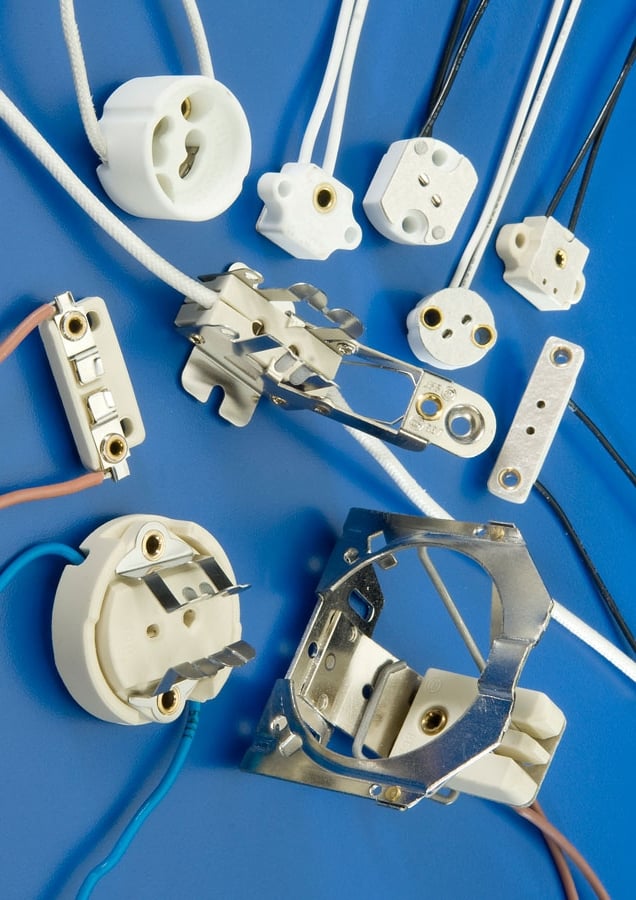Selecting the right kind of light bulb is important to make sure it works and gives you the lighting effect you want. Two common types of light bulbs you might come across are GU10 and G9. Even though they might look similar at first glance, they have different uses.
Understanding the differences between GU10 and G9 light bulbs will help you avoid buying the wrong kind of light bulb and wasting your time and money. In this article, we’ll look at the differences between GU10 and G9 bulbs to help you make the right choice.
The main difference between GU10 and G9 light bulbs is the lamp base and what you use them for. GU10 bulbs have a twist-lock base, and you use them in spotlights. G9 bulbs have a looped pin base, and you use them in smaller, decorative light fixtures.
Now, let’s look at the differences between GU10 and G9 light bulbs.

Understanding the GU10 Light Bulb
GU10 bulbs are one of the most widely used bulb types in both residential and commercial lighting. They are known for their versatile use in directional lighting, particularly in spotlights and downlights.
Base type: The “GU” in GU10 stands for “General Use,” while the number 10 refers to the distance in millimeters between the two pins on the light base. GU10 bulbs feature a twist-and-lock base, which has two pins that are 10mm apart. To install the bulb, you simply insert it into the socket and give it a slight twist, which locks it into place. This secure connection ensures the bulb remains firmly in the fixture, even in settings where vibrations or movement could otherwise loosen it.
Applications: GU10 bulbs are frequently used in fixtures where directional lighting is essential, such as spotlights, track lighting, and recessed lighting. The design of these bulbs allows for a focused beam of light, making them ideal for highlighting specific areas in a room, such as artwork, countertops, or architectural details. Their directional light output is perfect for task lighting or accent lighting, where you need to control the spread of light.
Available technologies: While GU10 bulbs were originally dominated by halogen technology, LED GU10 bulbs are now widely available and have become the preferred choice for many homeowners and businesses. LED GU10 bulbs offer several benefits, including lower energy consumption, longer lifespan, and reduced heat emission compared to their halogen counterparts. LED GU10 bulbs are available in various color temperatures and brightness levels, making them adaptable for both warm and cool lighting environments.

Understanding the G9 Light Bulb
In contrast to the GU10, the G9 bulb is typically smaller and designed for more compact fixtures, making it a popular choice for decorative and ambient lighting.
Base type: The G9 bulb has a bi-pin or looped pin base, with two thin pins that are 9mm apart. Unlike the twist-lock mechanism of the GU10, G9 bulbs are inserted straight into the socket. The pins slide into the socket holes, providing a secure fit without the need for twisting. This makes G9 bulbs particularly useful in fixtures where space is limited, and the bulb needs to fit snugly.
Applications: G9 bulbs are most commonly found in chandeliers, wall sconces, and decorative pendant lights. Their small size and compact base make them ideal for fixtures where aesthetics and subtle lighting are key. G9 bulbs are often used in situations where ambient or accent lighting is more important than strong, directional light. They provide a more diffused light that spreads throughout the space, creating a cozy and warm atmosphere.
Available technologies: Similar to GU10 bulbs, G9 bulbs come in both halogen and LED versions. LED G9 bulbs have gained popularity because of their energy efficiency and longer lifespan. Halogen G9 bulbs tend to emit a warmer, more natural light, but they generate more heat and have a shorter lifespan. LED G9 bulbs, on the other hand, consume significantly less energy and can last up to 25,000 hours or more, making them a cost-effective option in the long run.

Key Differences Between GU10 and G9 Bulbs
While GU10 and G9 bulbs serve different purposes, their key differences are mostly centered around their base design, application, and size.
Base design: One of the most obvious differences between these two bulb types is their base. GU10 bulbs have a twist-and-lock base, where the two pins are inserted into the socket and then twisted to lock into place. G9 bulbs, by contrast, have a bi-pin base, where the pins are simply inserted straight into the socket. This difference in base design means that GU10 and G9 bulbs are not interchangeable. You must use the correct bulb for the corresponding socket in your light fixture.
Application differences: Another significant difference lies in the types of fixtures they are used for. GU10 bulbs are typically installed in spotlights, track lights, and recessed lighting, where the goal is to provide directional lighting that highlights specific areas or tasks. G9 bulbs, on the other hand, are most commonly used in decorative and accent lighting fixtures, such as chandeliers and wall sconces, where the goal is to create ambient or mood lighting.
Bulb shape and size: GU10 bulbs are generally larger and more robust than G9 bulbs, making them suitable for high-output applications like ceiling spotlights. G9 bulbs, on the other hand, are much smaller and more compact, designed for use in fixtures where space is limited and where the lighting needs to be softer and less focused. This size difference also plays a role in how these bulbs are used in various applications.

When to Use GU10 vs. G9 Bulbs
Knowing when to use a GU10 bulb versus a G9 bulb can help you achieve the desired lighting effect in your space.
Use GU10 for:
- Recessed ceiling lighting: GU10 bulbs are ideal for recessed or downlight fixtures because of their ability to focus light in one direction. They are often used to illuminate specific areas in a room or provide task lighting in kitchens, bathrooms, or offices.
- Track lighting: In track lighting systems, GU10 bulbs are commonly used to direct light toward artwork, architectural features, or work surfaces. The directional nature of the light makes them perfect for highlighting particular spaces.
- Spotlights: GU10 bulbs are also great for creating spotlight effects in larger rooms, providing concentrated lighting where needed.
Use G9 for:
- Chandeliers and wall sconces: G9 bulbs are ideal for decorative lighting, where the light fixture itself is often a focal point. Their compact size allows them to be used in intricate designs without drawing too much attention to the bulb itself.
- Pendant lights: G9 bulbs work well in pendant fixtures that provide soft, ambient lighting in dining areas, entryways, or bedrooms.
- Smaller, decorative fixtures: G9 bulbs are a great choice for smaller fixtures where space is limited, and a warm, diffused light is needed to create a cozy atmosphere.

Energy Efficiency and Lifespan of GU10 and G9 Bulbs
In terms of energy efficiency and lifespan, both GU10 and G9 bulbs are available in halogen and LED versions, but LED options are far superior in both categories.
LED vs. Halogen: LED GU10 and G9 bulbs are much more energy-efficient than halogen versions, using up to 80% less energy. This makes them not only environmentally friendly but also cost-effective over the long term, as they reduce electricity bills. LED bulbs also run cooler, reducing the risk of overheating and making them safer for enclosed fixtures.
Lifespan comparison: While halogen bulbs typically last around 2,000 hours, LED bulbs can last up to 25,000 hours or more. This makes LED bulbs a much better choice for fixtures that are difficult to access or require frequent use, as you won’t need to replace them as often. Whether you are using GU10 or G9 bulbs, choosing LED technology will provide you with the longest-lasting and most energy-efficient lighting solution.

Final Words:
Knowing the differences between GU10 and G9 light bulbs is important because you need to pick the right one for your fixture. Whether you need GU10 bulbs for directional lighting or G9 bulbs for ambient light, understanding the base type, applications, and available technology will help you make the right choice. By doing so, you’ll have the best lighting performance and save energy in your home or business.













